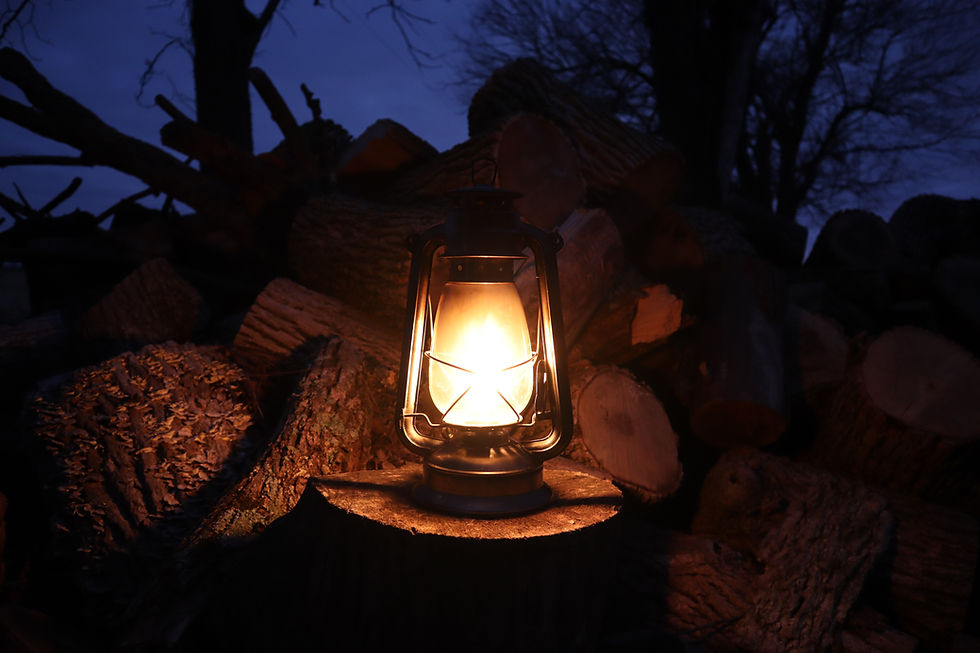Invasive plants: Garlic Mustard in Ontario
- Waterloo Gardeners
- May 1, 2024
- 3 min read

Garlic mustard, with its pungent aroma and cheerful yellow flowers, might seem like a harmless addition to Ontario's forests. But don't be fooled! This seemingly innocuous plant is actually a major invasive species, threatening the delicate balance of our ecosystems. Let's delve into the origins of garlic mustard, its journey to Canada, and why it's become such a troublesome resident in Ontario.
European Roots:
Garlic mustard hails from Europe, specifically regions stretching from England to Italy (Ontario Invasive Plant Council). Introduced to North America in the early 1800s, settlers brought it for its culinary and medicinal uses. Back then, they likely appreciated its vitamins and the garlicky flavour it imparted to dishes.
Accidental Escape:
Unfortunately, garlic mustard didn't stay politely put in settlers' gardens. Like many species introduced into a different climate and region, it readily escaped cultivation and began to spread aggressively throughout the continent. One reason for this is its efficient seed dispersal. Unlike some plants that rely on wind or water, garlic mustard hitches a ride on unsuspecting hikers, pets, and wildlife, with seeds clinging to fur or clothing according to Invasive Species Centre.

Ontario's Understory Under Siege:
So, why is garlic mustard such a problem in Ontario? Here's the crux of the issue: Garlic mustard is a biennial plant, meaning it completes its life cycle in two years. In its first year, it forms a dense rosette of leaves, effectively smothering out native wildflowers that struggle to compete for sunlight and space [Ontario Ministry of the Environment, Conservation and Parks].
But garlic mustard's treachery goes even deeper. It releases chemicals into the soil that inhibit the growth of beneficial fungi, further hindering the establishment of native plants. This allelopathic effect disrupts the delicate web of relationships between plants and soil microbes, leading to a decline in overall biodiversity.
The consequences are far-reaching. Garlic mustard's relentless spread threatens several species at risk in Ontario, including American ginseng, trillium varieties, and the hoary mountain mint.
What can be done?
While garlic mustard's grip on Ontario's forests is concerning, there is hope. There are ongoing efforts to control its spread, often involving manual removal of plants before they flower and set seed. Public awareness campaigns also play a vital role in educating people about the importance of preventing the spread of invasive species.
So, the next time you're enjoying a hike in Ontario's beautiful natural spaces, keep an eye out for garlic mustard. By learning to identify it and understanding its impact, we can all play a part in protecting our precious ecosystems.
Disposing of Invasive Plants the Right Way: Garlic Mustard in Ontario.
You've done your part by pulling up invasive garlic mustard plants from your garden or local park. But wait! The battle isn't over yet. Disposing of invasive plant material improperly can actually worsen the problem by allowing unwanted hitchhikers to establish themselves elsewhere. Here's how to dispose of invasive plants responsibly and prevent their spread:
General Rules:
Never compost invasive plants: Even seemingly dead parts can sprout roots or release viable seeds in your compost pile.
Bagging it up: Use heavy-duty, sealed garbage bags to contain plant material. Minimize soil trapped in the bag to avoid accidentally transporting unwanted seeds.
Sun Power: Leave the bagged plant material in direct sunlight for several days. This heat helps ensure the demise of any lingering life in the plant parts.
Disposal Options:
Municipal Landfill: Check with your local waste management department to see if they accept invasive plant disposal in landfills. This is often the most recommended option.
Dedicated Disposal Sites: Some regions might have designated drop-off locations specifically for invasive plant material. Contact your local environmental agency for details.
High-Temperature Disposal (with caution): In some controlled situations, burning invasive plant material at very high temperatures might be an option. However, this method requires permits and should only be attempted with proper safety precautions to avoid air pollution and unintended fires. Make sure to consult your local fire department and environmental agencies before considering this approach.
Bonus Tips:
Timing is Key: The ideal time to remove invasive plants is before they flower and set seed. This minimizes the risk of spreading them further during disposal.
Clean Up Thoroughly: After removing invasive plants, ensure you haven't left any fragments or seeds behind. These can easily sprout and repopulate the area.
Be a Responsible Citizen: Educate others about the importance of proper invasive plant disposal. Together, we can prevent these unwanted guests from taking over our natural spaces.
Remember, responsible disposal is a crucial step in the fight against invasive plants. By following these guidelines, you can help protect Ontario's ecosystems and ensure the continued success of your invasive plant removal efforts. For more specific information on invasive plant disposal regulations and recommended practices in your area, consult your local environmental agency or botanical garden.








Comments